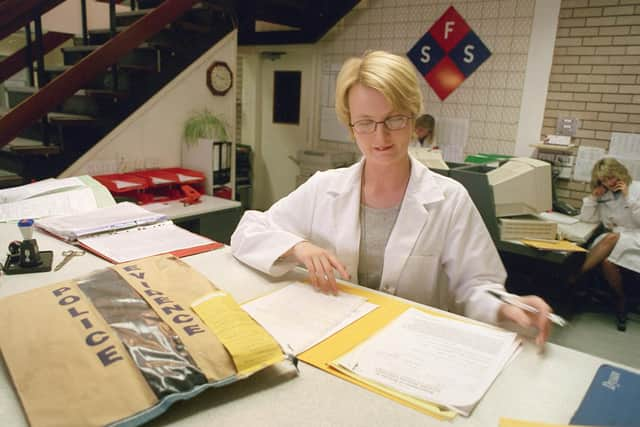Lancashire crimefighters putting the nation’s most notorious criminals away
and live on Freeview channel 276
When the forensic science laboratory in Chorley was opened it marked a major landmark in crime-fighting in the UK.
The purpose-built, £300,000 facility was to sit at the vanguard of detective work for 45 years helping crack some of the highest-profile criminal cases in the country.
Advertisement
Hide AdAdvertisement
Hide AdIt was officially opened by Home Office Minister Richard Sharples in April 1971 to serve six police forces.


In its heyday the lab employed more than 200 people and supplied specialist forensic services to police forces across the country.
And it played a key role in solving numerous high-profile crimes like those committed by Greater Manchester GP Dr Shipman, who was the most prolific serial killer in history with an estimate 200-plus victims.
Scientists at the Washington Lane site, in Euxton, also helped with the successful conviction of Rose West, wife of notorious murderer Fred West from Gloucester.
Advertisement
Hide AdAdvertisement
Hide AdThey played a part in nailing Ipswich prostitute killer Stephen Wright and worked on cases like the abduction of schoolgirl Shannon Matthews, the murders of Gary Newlove and Sophie Lancaster and the 7/7 bombings in London.
They also identified Robert Morley as the killer of nine-year-old Imraan Vohra who was found dead in Avenham Park, Preston, in 1985.
Among the ground-breaking cases solved thanks to experts at the laboratory was the 1988 murder of Helen McCourt in Billinge which saw only the third conviction without a body since the Second World War.
With no remains scientists used samples from Helen’s parents to provide a DNA likelihood of damning blood stains belonging to Helen in a pioneering case.
Advertisement
Hide AdAdvertisement
Hide AdAnd just four years ago a man was found guilty of the rape and manslaughter of a schoolgirl more than 40 years ago after a key piece of forensic evidence was found in the lab.
Stephen Hough was convicted when samples which could not previously be located were discovered in a ‘sea of envelopes’ inside a box on shelves in Chorley.
In the meantime another man had pleaded guilty to manslaughter and was jailed for 12 years after telling the jury he was “coerced” by police into a false confession
As well as murders, at its peak the laboratory used to carry out investigations of more than 2,000 drug cases every year as well as sudden deaths, suicides and overdoses. Experts were able to analyse drugs such as heroin and pinpoint where they came from and both differentiate between and match batches seized from the streets.
Advertisement
Hide AdAdvertisement
Hide AdBut the facility came under the spotlight amid claims flawed forensic work rendered the conviction of so-called Birmingham Six unsafe.
The accused men were freed on appeal having served 16 years for IRA bombings at two pubs in Birmingham in 1975 which killed 21 people
Since the Government closed down the national Forensic Science Service in 2011 – because it was said to be running up losses of £2m a month – much of the scientific work it used to carry out across its seven centres has been done by private laboratories.